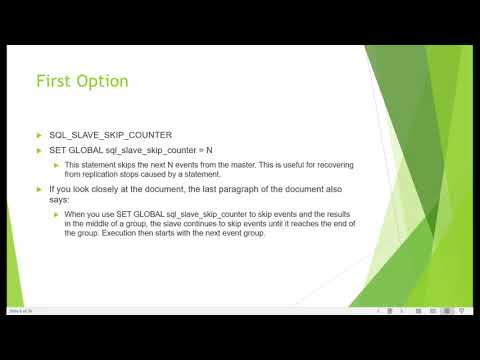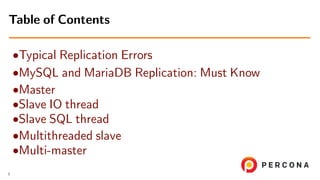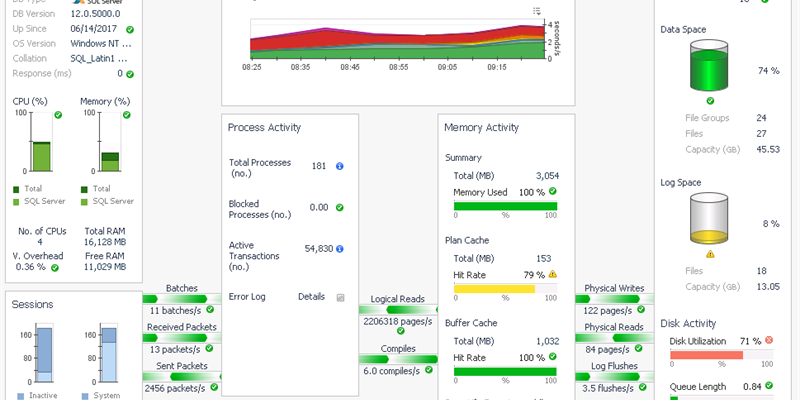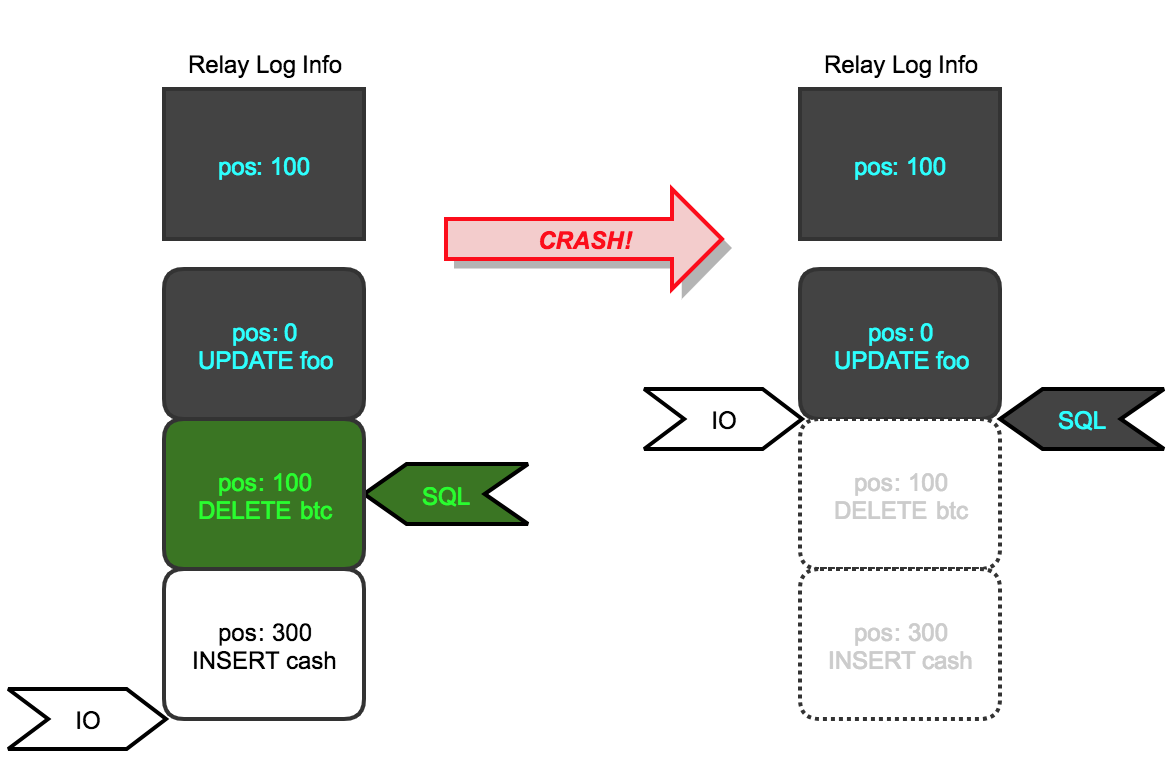Mysql Replication Error 1032
MySQL replication is a powerful feature that allows for the synchronization of data between multiple servers, ensuring redundancy and high availability in database systems. Replication is widely used in enterprise environments, where maintaining consistent and up-to-date data across multiple servers is crucial. However, occasionally, MySQL replication can encounter errors, one of the most common being error 1032. In this article, we will delve into the details of MySQL replication error 1032, its causes, impacts, troubleshooting steps, and potential solutions. We will also provide best practices for preventing this error and advanced techniques for handling it effectively.
Replication Overview:
MySQL replication is the process of copying data from one database (the master) to another (the slave) to ensure that both instances have the same data. The primary purpose of replication is to provide redundancy and improve scalability by allowing read-intensive operations to be offloaded to the slave servers. It also enables geographic distribution of data, enabling better disaster recovery and faster response times for users in different regions.
MySQL replication works by transmitting the changes made on the master database to the slave database. These changes can be in the form of insertions, deletions, or updates. The slave server processes these changes in a sequential manner, thereby keeping the data synchronized with the master. Replication is performed using binary log files that capture all the changes made on the master. These log files are then transmitted to the slaves, where they are applied to replicate the same changes.
Understanding MySQL Replication Error 1032:
MySQL replication error 1032, also known as “Can’t find record,” occurs when the replication process fails to find a specific record on the slave server that exists on the master server. This error indicates a data inconsistency between the master and the slave, preventing the replication process from proceeding smoothly.
There can be several causes for error 1032. Some common reasons include primary key constraints violation, inconsistent data between master and slave servers, conflicts in data updates, failed DELETE or INSERT statements, and corrupted tables or indexes.
The impact of error 1032 on database replication can be significant. It halts the replication process, leading to data discrepancies between the master and the slave. If not resolved promptly, it can result in data inconsistencies, data loss, and even application failures.
Troubleshooting Steps to Identify MySQL Replication Error 1032:
To identify and resolve MySQL replication error 1032, follow these troubleshooting steps:
1. Check primary key constraints: Verify if the primary key constraints are correctly set up on both the master and the slave servers. Any violation of the primary key constraints can lead to error 1032. Correct the constraints if necessary.
2. Ensure consistent data across master and slave servers: Compare the data on the master and slave servers to identify any inconsistencies. Check for missing records or discrepancies in the data. Use tools like checksums to validate the data integrity.
3. Resolve conflicts in data updates: If there are conflicting updates on the master and slave servers, error 1032 can occur. Identify the conflicts and resolve them by manually updating the affected records on the slave server.
4. Correct failed DELETE or INSERT statements: If the replication process encounters failed DELETE or INSERT statements, it can result in error 1032. Identify the failed statements and correct them to allow the replication process to proceed.
5. Repair corrupted tables or indexes: Corrupted tables or indexes can also cause error 1032. Perform table or index repair operations using MySQL’s built-in repair functions.
Potential Solutions to MySQL Replication Error 1032:
Here are some potential solutions to address MySQL replication error 1032:
1. Checking and correcting primary key constraints: Ensure that primary key constraints are correctly defined on both the master and slave servers. If any inconsistencies are found, correct them by altering the table or index definitions.
2. Ensuring consistent data across master and slave servers: Compare the data on the master and slave servers using checksums or other mechanisms. If inconsistencies are found, manually update the affected records on the slave to match the master.
3. Resolving conflicts in data updates: When conflicts occur in data updates, identify and resolve them by manually updating the affected records on the slave server. This ensures that the data remains consistent between the master and the slave.
4. Correcting failed DELETE or INSERT statements: Identify any failed DELETE or INSERT statements and correct them. This may involve making changes to the replication configuration or manually executing the statements on the slave server.
5. Repairing corrupted tables or indexes: If the error is caused by corrupted tables or indexes, use MySQL’s built-in repair functions to repair them. This can help to restore the integrity of the affected tables or indexes.
Best Practices to Prevent MySQL Replication Error 1032:
To prevent MySQL replication error 1032, consider the following best practices:
1. Regular monitoring and maintenance of replication status: Monitor the replication status regularly to detect and address any issues proactively. This includes monitoring the replication lag, checking for error messages, and verifying data consistency.
2. Proper configuration and synchronization of servers: Ensure that both the master and slave servers are configured correctly and are in sync. This includes verifying the replication settings, checking the server clocks, and validating the data integrity.
3. Consistent backup and restore procedures: Implement a reliable backup and restore strategy to protect against data loss and corruption. Regularly backup both the master and slave servers to ensure a consistent and up-to-date backup is available.
4. Utilizing error-checking tools for early detection: Use MySQL’s built-in error-checking tools, such as replication checksums and error codes, to detect potential issues early on. Regularly check the error logs for any warnings or errors related to replication.
5. Reviewing and optimizing database queries: Regularly review and optimize the database queries to minimize the chances of error 1032 occurring. Ensure that queries are properly indexed, follow best practices, and are efficient in retrieving and updating data.
Advanced Techniques for Handling MySQL Replication Error 1032:
For advanced handling of MySQL replication error 1032, consider the following techniques:
1. Implementing parallel replication for improved performance: Parallel replication allows multiple threads to apply changes from the binary log concurrently, improving the replication performance. This can help reduce replication lag and minimize the chances of encountering error 1032.
2. Using row-based replication instead of statement-based replication: Row-based replication replicates the changes made at the row level, ensuring more accurate and consistent replication. This can be an effective way to prevent error 1032 caused by conflicting updates or statements.
3. Configuring filters to exclude or modify certain data on the slave: Use replication filters to exclude or modify specific data on the slave server. This can be useful when certain data should not be replicated or needs to be transformed before being replicated.
4. Monitoring and resolving conflicts in data updates: Continuously monitor for conflicts in data updates between the master and the slave. If conflicts occur, identify and resolve them promptly by manually updating the affected records on the slave.
5. Optimizing replication settings for high availability and reliability: Configure replication settings to ensure high availability and reliability. This includes setting up redundant replication channels, using checksums for data validation, and employing techniques like semi-synchronous replication.
In conclusion, MySQL replication error 1032 can be a challenging issue to tackle, but with the right understanding, troubleshooting steps, and potential solutions, it is possible to overcome it. By following best practices and implementing advanced techniques, database administrators can prevent this error from occurring and ensure a robust and reliable replication environment. Regular monitoring, proper configuration, and optimization of queries are key to minimizing the chances of encountering error 1032 and maintaining a healthy replication setup.
11 Repair Mysql Replication Intro | Mysql Replication Tutorial
Keywords searched by users: mysql replication error 1032 mysql error 1032 can’t find record, mariadb error_code: 1032; handler error ha_err_key_not_found, MySQL replication Master-Slave, Slave-skip-errors, mysql replication error codes, Mysql replication er 1062, HA_ERR_KEY_NOT_FOUND, Can t find record in global_priv
Categories: Top 71 Mysql Replication Error 1032
See more here: nhanvietluanvan.com
Mysql Error 1032 Can’T Find Record
Introduction:
MySQL is one of the most widely used relational database management systems (RDBMS) in the world. It is known for its stability and reliability, but like any software, it can encounter errors sometimes. One such error is MySQL Error 1032, which occurs when the database engine cannot find a record in a table that it is trying to access. In this article, we will explore this error in detail, discussing its causes, potential solutions, and addressing frequently asked questions (FAQs) related to the topic.
Understanding MySQL Error 1032:
The MySQL Error 1032, also known as “Can’t Find Record,” occurs when an operation or query attempts to read or modify a row that doesn’t exist in the database table. This error typically arises when a statement fails to find a specific record with the supplied criteria. It is important to note that this error is exclusive to InnoDB storage engine, as MyISAM does not support foreign keys and thus cannot encounter this issue.
Common Causes of MySQL Error 1032:
1. Foreign Key Constraints: One of the most common causes of this error is the presence of foreign key constraints. If a foreign key is set on a table and the referenced record is deleted or modified, the affected table may throw Error 1032 when attempting to access the non-existent record.
2. Incorrect Query: An incorrectly written or formulated query may lead to this error. For instance, providing wrong values for selection criteria, such as searching for an ID that does not exist.
3. Concurrent Transactions: InnoDB is a multi-version concurrency control (MVCC) storage engine, which means it supports multiple concurrent transactions. However, when two or more transactions modify the same record simultaneously, it can lead to conflicts, resulting in error 1032.
Resolving MySQL Error 1032:
Now that we understand the general causes of this error, let’s delve into potential solutions for resolving it. It is important to note that these solutions may not cover every possible scenario, but they address the most common scenarios related to Error 1032.
1. Check Foreign Key Constraints: Ensure that the referenced records exist in the parent table before performing any operations on the child table with foreign keys. Additionally, make sure the foreign key constraints are set up correctly, and update or delete operations are handled accordingly.
2. Correct the Query: Verify that the queries you are executing have valid and appropriate selection criteria. Double-check the values and conditions used in the query to ensure that they match the existing records in the table.
3. Use Transactions and Locks: If concurrent transactions contribute to the error, consider using transactions and locking mechanisms to maintain data consistency during concurrent operations.
4. Examine Data Integrity: It is essential to maintain data integrity in the database. Regularly check for inconsistencies or orphaned records in the database tables. Correcting these inconsistencies can help resolve Error 1032, as it prevents queries from accessing non-existent records.
Frequently Asked Questions (FAQs):
Q1. Is MySQL Error 1032 specific to a particular version of MySQL?
A1. No, Error 1032 can occur in various versions of MySQL, as it is related to the InnoDB storage engine rather than a particular MySQL release.
Q2. I am unable to resolve the error even after following the suggested solutions. What should I do?
A2. If the suggested solutions do not resolve the error, ensure that you have backups of your database, consult relevant MySQL documentation, or consider seeking assistance from MySQL support forums or professional database administrators.
Q3. Can MyISAM engine tables also encounter Error 1032?
A3. No, MyISAM storage engine does not support foreign key constraints, making it immune to this specific error. However, it may encounter other types of errors depending on the operations performed.
Q4. How can I prevent Error 1032 in the future?
A4. Pay close attention to managing foreign key constraints, writing correct queries, and avoiding simultaneous modifications to the same records by implementing proper transactional techniques and locking mechanisms.
Conclusion:
MySQL Error 1032, also known as “Can’t Find Record,” can be an obstacle when trying to access or modify data. Understanding the causes and implementing appropriate solutions can help troubleshoot this error effectively. By following the suggestions mentioned in this article, you can minimize the occurrence of Error 1032 and build a more robust and reliable MySQL database environment.
Mariadb Error_Code: 1032; Handler Error Ha_Err_Key_Not_Found
Error_Code: 1032; Handler Error ha_err_key_not_found – What Does It Mean?
The error message “error_code: 1032; handler error ha_err_key_not_found” indicates that a specific record or key requested by an operation performed on a MariaDB table was not found. This error typically occurs when attempting to perform a query that requires accessing or modifying data based on a specific key, but the requested key is not present in the table.
Potential Causes of the Error
1. Missing Key: The primary cause of this error is when a query attempts to retrieve or modify a record based on a specific key, but that key does not exist in the table.
2. Inconsistent or Deprecated Schema: This error can also arise if there are inconsistencies in the table schema or if the schema used during query execution is outdated or deprecated. Schema inconsistencies can be caused by various factors, including alterations made to the table structure without updating all related components or incorrect syncing between primary and backup databases.
3. Database Corruption: In some cases, this error may be an indication of database corruption. Corruption can occur due to hardware failures, improper shutdowns, or software bugs.
Solutions to the ha_err_key_not_found Error
Now that we understand the possible causes of the “error_code: 1032; handler error ha_err_key_not_found,” let’s explore some potential solutions to resolve the issue:
1. Verify Key Existence: Firstly, double-check that the key you are trying to access or modify exists in the table. Inspect the table structure and compare it against the queries being executed to ensure consistency.
2. Check Schema Consistency: If you suspect schema inconsistencies, validate the table structure against the queries you are performing. Make sure any structural changes made to the table are propagated accurately throughout your database environment, including any replication or backup instances.
3. Repair and Optimize the Table: To address potential database corruption issues, attempt to repair and optimize the table where the error occurs. The REPAIR and OPTIMIZE commands can help correct various table-related errors, including possible data corruption.
4. Restore from Backup: If the error persists and you have a recent backup available, consider restoring the affected table(s) from the backup. Ensure that you follow the appropriate backup restoration procedures to prevent further data loss.
5. Monitor and Analyze Logs: Analyzing relevant MariaDB logs, such as the error log or MySQL slow query log, might provide further insights into the root cause. Look for any recurring patterns or error messages that might be related to the “ha_err_key_not_found” error. In some cases, alternative error messages might provide additional context to troubleshoot effectively.
MariaDB Error_Code: 1032 FAQs:
Q1. Can this error be encountered in other MySQL-based DBMSs?
A1. While “error_code: 1032; handler error ha_err_key_not_found” specifically refers to MariaDB errors, similar errors with different error codes might occur in other MySQL-based database management systems like MySQL, Percona Server, or Amazon RDS.
Q2. Is there any risk of data loss when encountering this error?
A2. Typically, encountering the “ha_err_key_not_found” error does not directly lead to data loss. However, if the error is a result of database corruption, there is a potential risk of further data integrity issues. Therefore, it’s crucial to address the underlying cause promptly.
Q3. Is it necessary to contact MariaDB support for this error?
A3. While contacting MariaDB support is an option if you have a commercial contract, it is not always necessary for this particular error. Most instances of the “error_code: 1032; handler error ha_err_key_not_found” can be resolved by following the steps outlined in this article.
Q4. Are there any preventive measures to avoid encountering this error?
A4. To minimize the occurrence of this error, ensure that your database environment is properly maintained, including regular backups, system monitoring, and following recommended practices for schema alterations. Additionally, validating key existence and consistency before executing queries can help detect potential errors before they occur.
Conclusion
The “error_code: 1032; handler error ha_err_key_not_found” in MariaDB can be frustrating, but with a systematic approach, it is possible to resolve the issue and get your database back on track. By verifying key existence, checking schema consistency, repairing or restoring from backup, and analyzing logs, you will be on your way to overcoming this error and ensuring the smooth operation of your MariaDB database. Remember, regular maintenance and adhering to best practices can help prevent such errors from occurring in the future.
Images related to the topic mysql replication error 1032

Found 20 images related to mysql replication error 1032 theme












Article link: mysql replication error 1032.
Learn more about the topic mysql replication error 1032.
- Slave replication stops with Last_SQL_Errno: 1032
- MySQL replication out of sync: How to do a full database …
- Mysql replication warning in log Error_code: 1032
- MySQL slave Error_code: 1032 | HA_ERR_KEY_NOT_FOUND
- Slave stoping with Last_SQL_Errno: 1032
- MySQL Error 1032 “Can’t find record in table” – Stack Overflow
- How To Skip Replication Errors in GTID-Based Replication
- Error_code: 1032; handler error HA_ERR_END_OF_FILE
See more: https://nhanvietluanvan.com/luat-hoc/